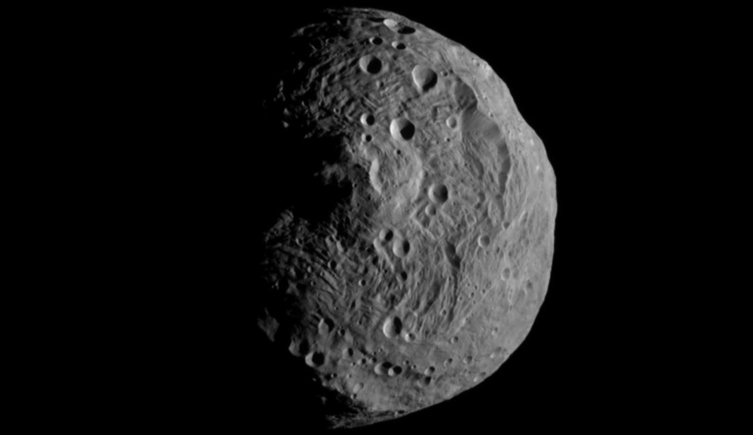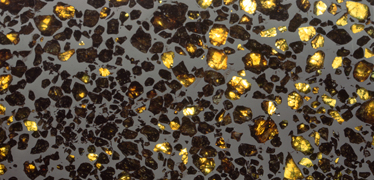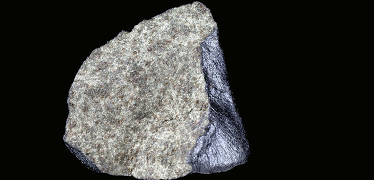Principal Investigator
Prof Sara Russell

Vesta is one of the largest asteroids in the solar system
Prof Sara Russell
We are studying chondrite meteorites in our collection to learn about conditions in the early solar system and the processes that formed the planets.
Most of the 2,000 meteorites in our collection originate from a belt of minor planets between Mars and Jupiter. These asteroids formed at the same time as our solar system, around 4.5 billion years ago.
Chondrites are stony meteorites that have not melted or been modified since their formation. They preserve information about conditions in the primitive solar system, when the Sun, planets and asteroids were forming.
Our current research focuses on dating chondrite meteorites and studying their chemical and mineral composition.
We are isolating chondrules from primitive chondrite meteorites and calculating how much aluminium-26 they originally contained by measuring the daughter isotope magnesium-26. Radioactive aluminium-26 has a half-life of 730 thousand years. Measuring the magnesium-26 content allows us to date these meteorites.
Chondrules are surrounded by a fine-grained matrix. This matrix is not as well characterised as the larger components of meteorites. We are investigating the origins of matrix material by studying its:
We are investigating the relationship between the mineralogy of chondrule accretionary rims and the chondrule matrix.
CI chondrites are the most chemically primitive objects we have access to. Their composition is similar to that of the Sun. We are studying the mineralogy of CI chondrites and measuring their chemical make-up and water content.
We are comparing theisotopic composition of oxygen in calcium- and aluminium-rich inclusions (CAI) and their rims to determine whether they formed in the same reservoir.
Sulphide minerals are found in many meteorites. We are investigating the trace element composition of these minerals to learn more about their abundance and distribution in the early solar system.
We use a combination of imaging techniques to determine the abundance of major and minor elements in our samples, including:
We also use techniques such as mass spectrometry to analyse trace element abundances and isotope variations within the samples.
We use X-ray diffraction as a complementary technique to study the mineralogy of meteorites.


We study the Earth's origins and environment, and the evolution of life.

Investigating the origins and evolution of Earth and our solar system.

The Museum houses one of the world's finest collections, consisting of 2,000 meteorites.